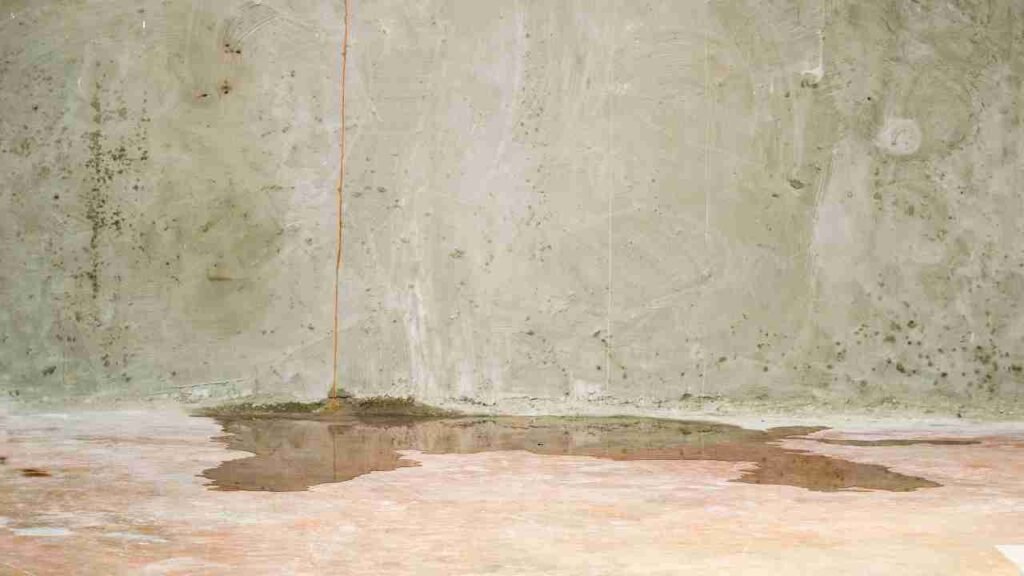
Stains on your beautiful flooring can be as unwelcome as uninvited guests at a dinner party. Salt and water, the notorious duo, often leave their marks, turning your pristine floors into a canvas of unsightly scars. But fear not, dear reader!
This post is your trusty guide, your secret weapon against these stubborn stains. We’re about to dive into the nitty-gritty of banishing salt and water stains from your flooring, restoring its original charm and making it the envy of your neighborhood. So, roll up your sleeves and let’s get started!
Salt and Water Stains:
Different types of flooring have varying degrees of susceptibility to these stains. Hardwood and laminate floors, for instance, are particularly prone to water stains, while tile and concrete floors often bear the brunt of salt stains.
The impact of these stains goes beyond just aesthetics. Over time, salt and water can degrade the protective finish of your floors, making them more susceptible to further damage and reducing their lifespan.
Preventive Measures:
As the saying goes, an ounce of prevention is worth a pound of cure. This couldn’t be more true when it comes to maintaining the beauty of your floors. You can prevent salt and water stains from ever forming by taking a few simple steps.
- Firstly, consider placing mats at all entrances to your home. These mats can catch much salt and water that might otherwise end up on your floors. Regularly cleaning these mats will ensure they remain effective.
- Secondly, habitually wiping up spills as soon as they occur. The longer water or salt sits on your floor, the more likely it is to leave a stain. Quick action can prevent a small accident from becoming a big problem.
- Thirdly, regular cleaning and maintenance are key. This includes sweeping, vacuuming, and mopping your floors regularly to remove any salt or water that may have been missed.
3 EASY STEPS TO KEEPING YOUR FLOORS SALT STAIN FREE
Salt stains can be stubborn, but they don’t stand a chance with the right approach. Here’s a step-by-step guide to help you banish those pesky salt stains from your floors:
Materials Needed:
- A bucket
- Warm water
- White vinegar
- A soft-bristle brush
- A mop
- Dry towels
Step-by-Step Guide to Removing Salt Stains:
- Mix half warm water and half white vinegar in your bucket. This mixture is a natural and effective cleaning solution that can break down salt crystals.
- Dip your soft-bristle brush into the solution and gently scrub the stained area. Be careful not to scrub too hard, as this can damage the floor’s finish.
- Once you’ve loosened the salt, mop up the solution with a mop. Make sure to rinse the mop frequently to avoid spreading the salt around.
- After mopping, dry the area thoroughly with towels. Leaving the floor wet could lead to water stains, which we want to avoid.
- Repeat the process if necessary. Some salt stains may require a couple of rounds of cleaning to remove completely.
- Grab a damp e-cloth (or any other high quality microfiber cloth or mop)
- Wipe the floor with the e-cloth (or mop). This will very easily remove most salt stains and will take a matter of seconds.
- If there is a buildup of salt (i.e, the damp e-cloth didn’t get it all), spray the area with diluted vinegar – 1 part water to 1/4 part vinegar – let it sit a minute or 4 and then wipe again.
PROTECTING YOUR FLOORS FROM SALT
If left, salt can dissolve the finish on some floors so it’s important to stay on top of it. It may be impossible to prevent all salt stains but here are a few tips to keep them at bay:
- Get rid of as much snow/salt off your boots OUTSIDE. Have a mat outside the door, “clap” your feet together, or kick a step to knock the snow off before stepping inside. Teach your kids how to do this too!
- Even if you hate them (like me), suck it up for winter and put a couple (few) mats down in the entrance way. Encourage kids to take all their gear off on the mats and to not step off them until their boots are off. Obviously, the bigger the mats, the better when you’re dealing with young kids.
- Keep wet boots on the mats or in trays.
- Show your kids/spouse what happens to the floor when they step off the mats then get them to wipe up the mess! A quick wipe with an e-cloth is easy enough that the kids can do it – and maybe that’ll help them remember to put their boots in the right spot!
This is my floor after using only a damp e-cloth General Purpose Cloth. Easy as pie!
Tips:
- Always test your cleaning solution on a small, hidden area of your floor first to ensure it won’t damage the finish.
- For stubborn stains, consider using a commercial salt stain remover. Just make sure it’s safe for your type of flooring.
- Remember, the key to effective stain removal is patience. Don’t rush the process; don’t get discouraged if the stain doesn’t disappear after the first attempt.
Conclusion:
From understanding the origins of salt and water stains to mastering the art of their removal, we’ve journeyed together through floor care. Remember, prevention is your first line of defense, but when stains occur, you’re now armed with effective strategies to tackle them head-on.
You can keep your floors looking as good as new with patience and the right tools. So here’s to beautiful, stain-free floors that stand the test of time!
